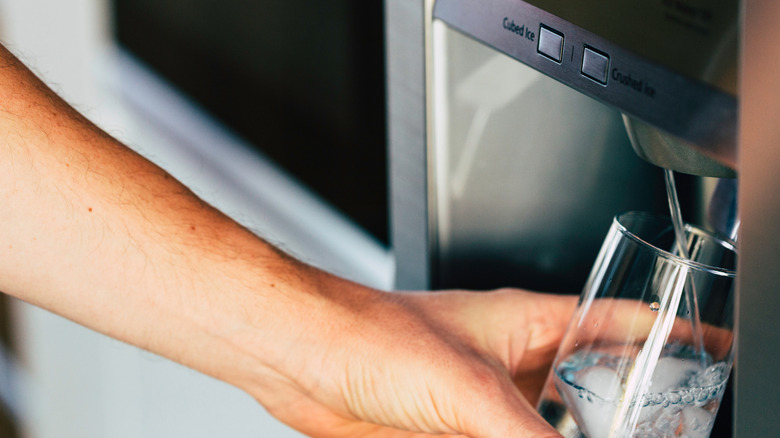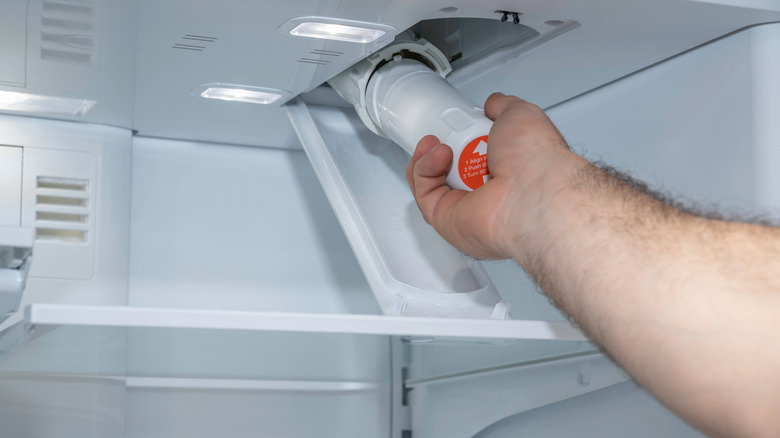Signs Your Fridge Filter Desperately Needs To Be Changed
You wipe the fingerprints from the door and clean spills from the shelves, but how often do you think about your fridge's water filter? It could be one of the spots you are missing when cleaning your fridge. Common signs that it's time for a fridge filter replacement include changes to water and ice quality and issues with performance.
Your taste buds often give you the first clues that the filter is old. If you notice a change in how the water tastes, it's often because your filter is no longer filtering properly. You might also notice that your ice starts to smell sour, metallic, or otherwise unpleasant. Before you assume the water filter is to blame, check the ice compartment to make sure it's clean and that the freezer doesn't smell in general. Appearance wise, your ice and water might look murky due to contaminants, or they could have tiny black pieces of carbon in them from the filter breaking down.
A common performance issue is a shrinking stream of water from your fridge's dispenser. An old filter can clog, which slows the flow of water. The size of ice cubes might decrease if the water flow decreases and the ice molds don't get filled all the way. If your fridge has one, the indicator light also typically turns on when your filter needs to be changed.
Taking care of your fridge filter
Maintenance tasks like changing the filter help with extending the life of your fridge. How often should you change your fridge water filter? Check the manufacturer's recommendations — six months is common. However, the filter may need to be changed sooner if you use the dispenser frequently. The amount of contaminants removed also affects the frequency. Failing to change the filter often enough can reduce the efficacy of removing contaminants and allow bacteria to grow in the filter.
To determine what replacement filter you need, check the owner's manual or the filter that's in the fridge. Locate the filter compartment, which is often in the upper right-hand corner or at the base of your fridge in the grill. Pull the filter out to see the type and model number. If you choose a generic replacement, look for one that's NSF certified, which means that it has gone through testing to check for safety standards.
Another way to improve water quality is cleaning your fridge's water dispenser. Buildup in the water tube on the dispenser could change how the water tastes. A slim bottle brush dipped in vinegar lets you scrub the inside of the tube. You can also wrap a vinegar-soaked paper towel around the nozzle and let it sit for several hours (or overnight) to clean up the gunk. Don't forget to wipe down all of the dispenser surfaces, including the removable tray.

